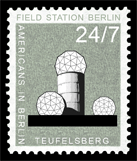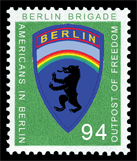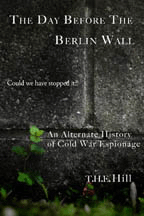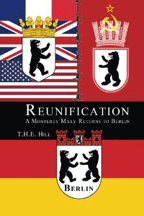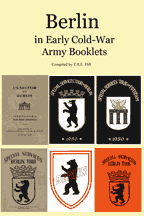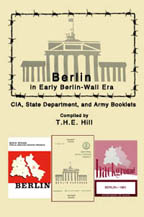A Cinderella-Stamp Commemorative Issue
The images below are displayed twice their actual size. To return to the stamps overview page, click here. |
|
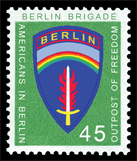 |
Berlin Brigade (1945) The American flag was officially raised for the first time in occupied Berlin on July fourth, 1945, and the value of this stamp represents the year in which the Americans arrived in Berlin to defend the cause of freedom east of the Elbe.
|
|
|
The Berlin Airlift (1948-1949) In 1948 the Soviets tried to push the Western Allies out of Berlin by requiring that all Western convoys to Berlin, which of necessity transited the Soviet Zone, be searched. The Allies, however, rejected this demand, and the Soviets stopped all surface traffic to the city. Thus besieged, the city’s three Western sectors faced starvation without supplies from the West.
|
Field Station Berlin (Teufelsberg) The distinctive silhouette of the former U.S. Army Field Station Berlin atop Teufelsberg (“Devil’s Mountain”) is a defining feature of the Berlin skyline. It can be seen for miles in every direction. This unique silhouette is a visible reminder of the resolve of the Western Allies to defend Berlin during the Cold War, and of Allied friendship with the newly reunited Germany and with Europe. Teufelsberg is where peace was built atop a pile of rubble from the destruction of World War II. From this commanding height, and from other sites spread throughout Berlin, the members of Field Station Berlin and its predecessor organizations stood steadfastly shoulder-to-shoulder with the West Berliners during the Cold War, resolutely ensuring that the island of freedom known as “West Berlin” remained free. They were “On Watch” twenty-four hours a day, every day, seven days a week (24/7) throughout the Cold War, helping to prevent the Cold War from turning hot and creating more rubble. The depiction of the Teufelsberg silhouette on this stamp recognizes their efforts to win the peace, which were crowned with success when the Berlin wall fell on 9 November 1989. Semper Vigilis Learn how you can help Save Teufelsberg, as a permanent visible reminder of the countless men and women of the Allied Armed Forces who resolutely stood shoulder-to-shoulder with the West Berliners during the Cold War, ensuring that the island of freedom known as "West Berlin" remained free. |
|
|
|
Twentieth Anniversary of the In Berlin, John F. Kennedy once said: “Today, in the world of freedom, the proudest boast is ‘Ich bin ein Berliner.” The men and women of the American Berlin Brigade felt this same sense of pride in being Berliners, perhaps even more strongly than Kennedy, because they actually lived in Berlin, and shared the fate of those whom it was their duty to defend.
|
|
|
Berlin Brigade (1994) Berlin Brigade was considered an elite unit, and prospective assignees were carefully screened, because they guarded an Outpost of Freedom 110 miles behind the Iron Curtain that was constantly in the spotlight of world attention. All those privileged to serve with Berlin Brigade can proudly claim the title “Defenders of Freedom.” The Allied Museum located in the former “Outpost” movie theater for U.S. Forces in Berlin describes the history of the three Western Allied Powers in post-war Berlin as a “fairy tale” with a happy ending. American, British, and French forces marched into Berlin in July 1945, as “victors and occupiers,” but they left, almost 50 years later, in 1994, as “friends and allies.” This change is symbolized in the design above by the replacement of the flaming sword of the victors with the Bear who inhabits the civilian crest of the city of Berlin.
The value of this stamp represents the year in which the Americans left Berlin. |
USASA Field Station Berlin veteran T.H.E. Hill has committed some of his memories to writting. His three Berlin novels record a unique sense of Berlin as seen by American soldiers serving in the Outpost of Freedom during the Cold War.
- Voices Under Berlin: The Tale of a Monterey Mary
- The Day Before the Berlin Wall: Could We have Stopped It?
- Reunification
while you are here, please take some time to learn more about both these unique "Berlin" novels.
Each of these novels has a non-fiction companion that describes life in the American Community in Berlin during the time period covered by the novel:


